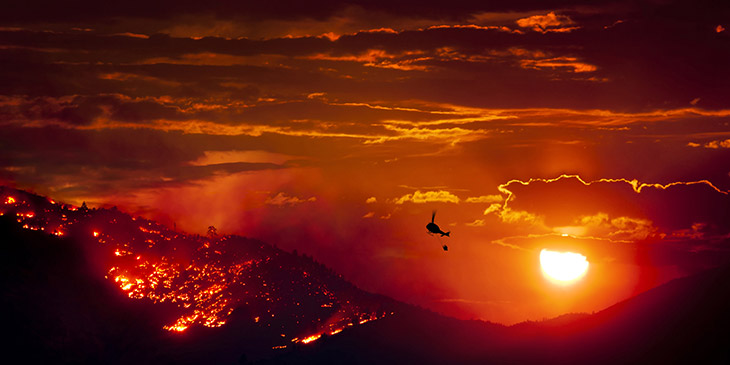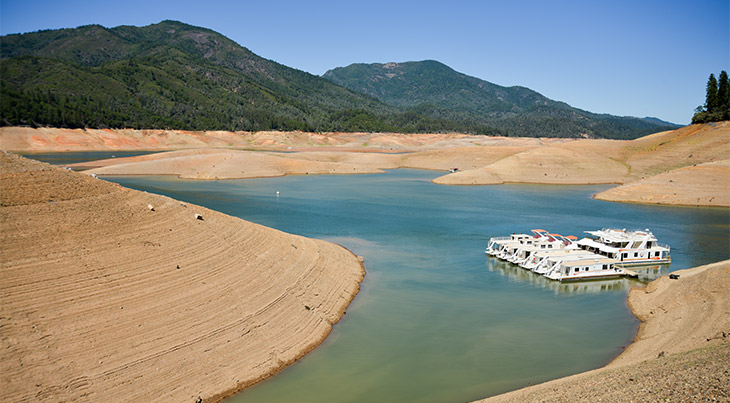Weather: its impact on society, emergency planning and response
Editorial Advisory Panel Member Bill Peterson introduces a regular blog on weather-related disasters, crisis preparedness and response

Firefighters around the globe have recognised that drought conditions produced by climate change have increased the length of fire seasons, as well as increased the frequency of lightning caused wildfires (photo: Shutterstock)
Hardly a day goes by that we are not bombarded with media reports of the effects of the ‘Global Warming’ phenomenon that seems to have gripped our planet. While the scientific community is virtually unanimous in agreeing that global warming is occurring, there is less consensus on its cause. In just one week at the beginning of this year, we saw reports of monumental bushfires in Western Australia, record snowfall in the Northeastern United States, as well as flooding in North Queensland, the Northwestern US, Albania, and Malawi, just to name a few recent weather-related catastrophes.
The scientific community is usually at the forefront of an increasing effort to inform and educate emergency responders, and others, about the potential impact of weather on society. "Global warming is bringing more frequent and severe heat waves, and the result will be serious for vulnerable populations," reports Dr Amanda Staudt, a climate scientist at the National Wildlife Federation in Reston, Virginia, USA.
A significant portion of the scientific community states that global warming is responsible for the heavy rainfall that has led to these, and other, major flooding events. Frequent and severe flooding events occur worldwide because warmer air holds more moisture. "Extreme precipitation is likely when a storm passes through a warmer atmosphere holding more water. In warmer months, it takes the form of torrential rainstorms; in winter, blizzards are more likely," explains the Union of Concerned Scientists in Cambridge, Massachusetts.
And, while the Northwestern US states were reeling from continuous record rainfall, the Washington Post recently reported that: "… global warming has very likely increased the probability of the large-scale atmospheric patterns that have played a role in the current, historic California drought," just a few hundred miles to the south (see CRJ 9:4 for article by Kelly Hubbard, Water Emergency Response Organisation of Orange County (WEROC) Programme Manager, looking at how the drought in California is affecting emergency planning and co-operation)

California's lingering drought exposes the 180-200 foot drop in water levels at Lake Shasta, the state’s largest reservoir, in August last year (photo: David Greitzer | Shutterstock)
Firefighters around the globe have recognised that drought conditions produced by climate change have increased the length of fire seasons, as well as increased the frequency of lightning caused wildfires.
The global warming phenomenon is, increasingly, being recognised as the potential cause of weather extremes seen more and more frequently all around the planet. Earlier this year, Time Magazine in New York reported that: "Climate change might just be driving the historic cold snap. And, although it seems counterintuitive, warmer temperatures have a direct effect on the jet stream and can produce colder air."
A recent report from the Natural Resource Defense Council, one of the most powerful environmental groups in the United States, stated: "Warmer water in the oceans pumps more energy into tropical storms, making them stronger and potentially more destructive. Even with storms of the same intensity, future hurricanes will cause more damage as higher sea levels exacerbate storm surges, flooding, and erosion."
Regardless of the cause, the increased weather impact phenomena poses a growing problem to the emergency response community: What actions need to be taken, by both the emergency responders and our stakeholders, to mitigate, prepare, respond, and recover from the challenges posed by global warming? And what best practices can we share to meet the challenge?
Bill Peterson will be providing an update on the Californian drought in the next issue of CRJ (9:4 – published in June 2015).
Bill Peterson, 30/04/2015